New parents often think more cushioning equals better comfort for their baby, but when it comes to baby lounger pillows, the opposite is true. This guide is for expecting parents and caregivers who want to make informed decisions about baby sleep products without compromising safety.
Thicker padding might seem cozy, but it can actually increase suffocation risks and create unsafe sleep surfaces. We’ll break down the current safety standards that regulate these products and explain the specific dangers that come with overly cushioned designs. You’ll also learn what features to prioritize when shopping for a baby lounger that keeps your little one both comfortable and secure.
By the end, you’ll understand why minimal padding isn’t a cost-cutting measure—it’s a critical safety feature that could protect your baby’s life.
Understanding Baby Lounger Safety Standards and Risks
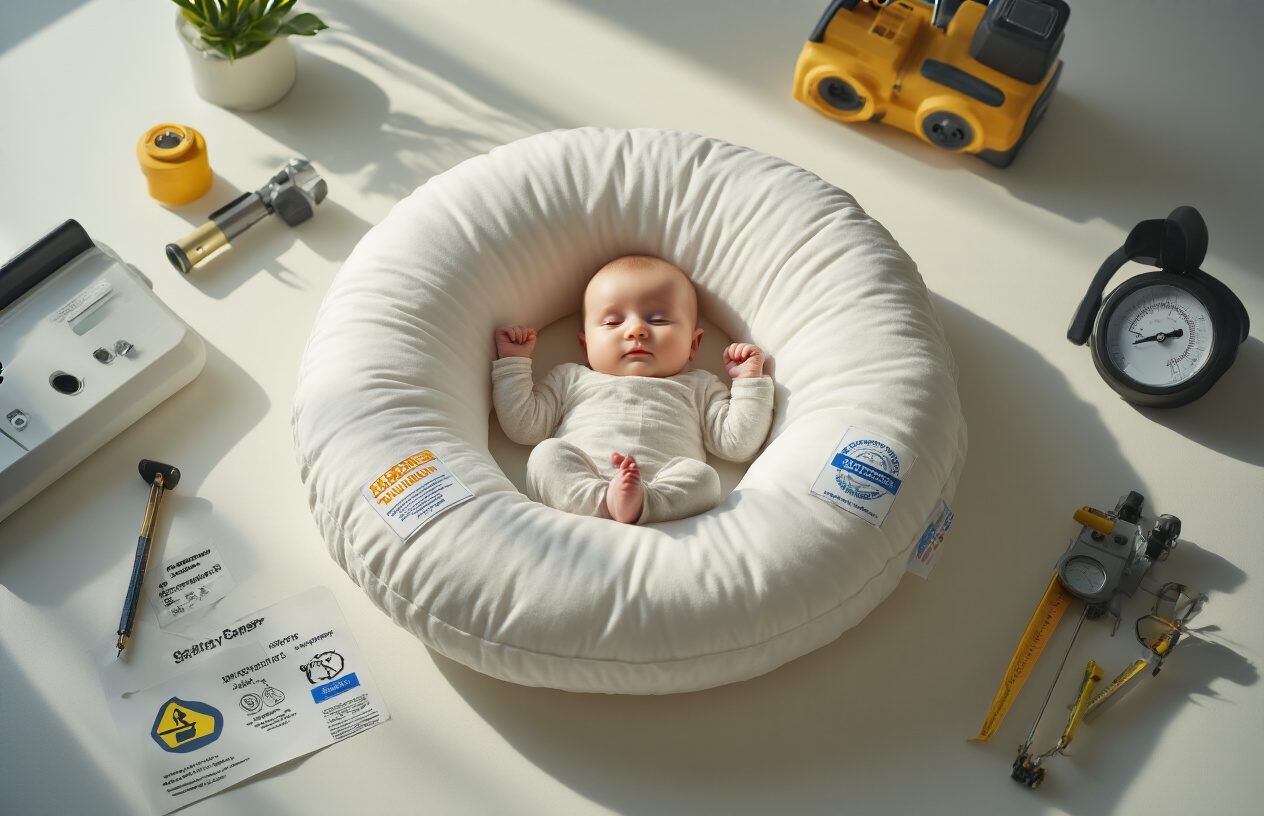
CPSC Regulations for Infant Sleep Products
The Consumer Product Safety Commission has established strict guidelines for infant sleep products, including baby lounger pillows, following numerous safety incidents. These regulations require products to meet specific structural integrity tests, including checking for loose parts, sharp edges, and fabric quality standards. The CPSC mandates that all infant sleep surfaces must be firm and flat, with minimal padding that could create breathing obstructions.
Baby lounger manufacturers must comply with mandatory safety standards that limit the depth of side walls and require adequate ventilation. Products failing these tests face immediate recalls, as seen with several popular brands in recent years. The regulations specifically target products with excessive cushioning that can create pockets where carbon dioxide accumulates around an infant’s face.
Common Hazards Associated with Thick Padding
Thick padding in baby loungers creates multiple safety risks that many parents don’t recognize. Heavily padded sides can form bowl-like shapes that prevent babies from turning their heads when breathing becomes restricted. This design flaw has been linked to numerous safety incidents where infants become trapped in compromised positions.
Overly cushioned surfaces also lack the firmness needed to support proper spinal alignment. Soft materials can compress under a baby’s weight, creating uneven surfaces that increase the risk of positional asphyxia. Additionally, thick padding often uses foam materials that can break down over time, creating potential choking hazards from small particles.
Suffocation and Overheating Dangers
Baby lounger pillows with excessive padding significantly increase suffocation risks through multiple mechanisms. Dense foam materials reduce air circulation around the baby’s head and face, leading to carbon dioxide buildup in breathing spaces. When babies turn their faces into thick padding, the soft material can conform around their nose and mouth, blocking normal airflow.
Overheating represents another serious concern with heavily padded products. Thick materials trap body heat, raising core temperatures to dangerous levels. Babies cannot regulate their body temperature effectively, making them particularly vulnerable to overheating-related complications. Studies show that overheating doubles the risk of SIDS, making temperature regulation a critical safety factor.
Statistical Data on Baby Lounger Incidents
Recent data from the CPSC reveals alarming trends in baby lounger-related incidents. Between 2019 and 2023, over 200 reports of injuries and deaths were linked to padded infant loungers. The majority of these incidents involved products with thick, soft padding that created unsafe sleep environments.
Hospital emergency departments report approximately 150 cases annually of breathing difficulties directly attributed to heavily padded baby products. Medical professionals note that 80% of these cases involve products with padding thickness exceeding safety recommendations. These statistics have prompted multiple product recalls and stricter manufacturing guidelines for infant sleep accessories.
The Science Behind Minimal Padding Design
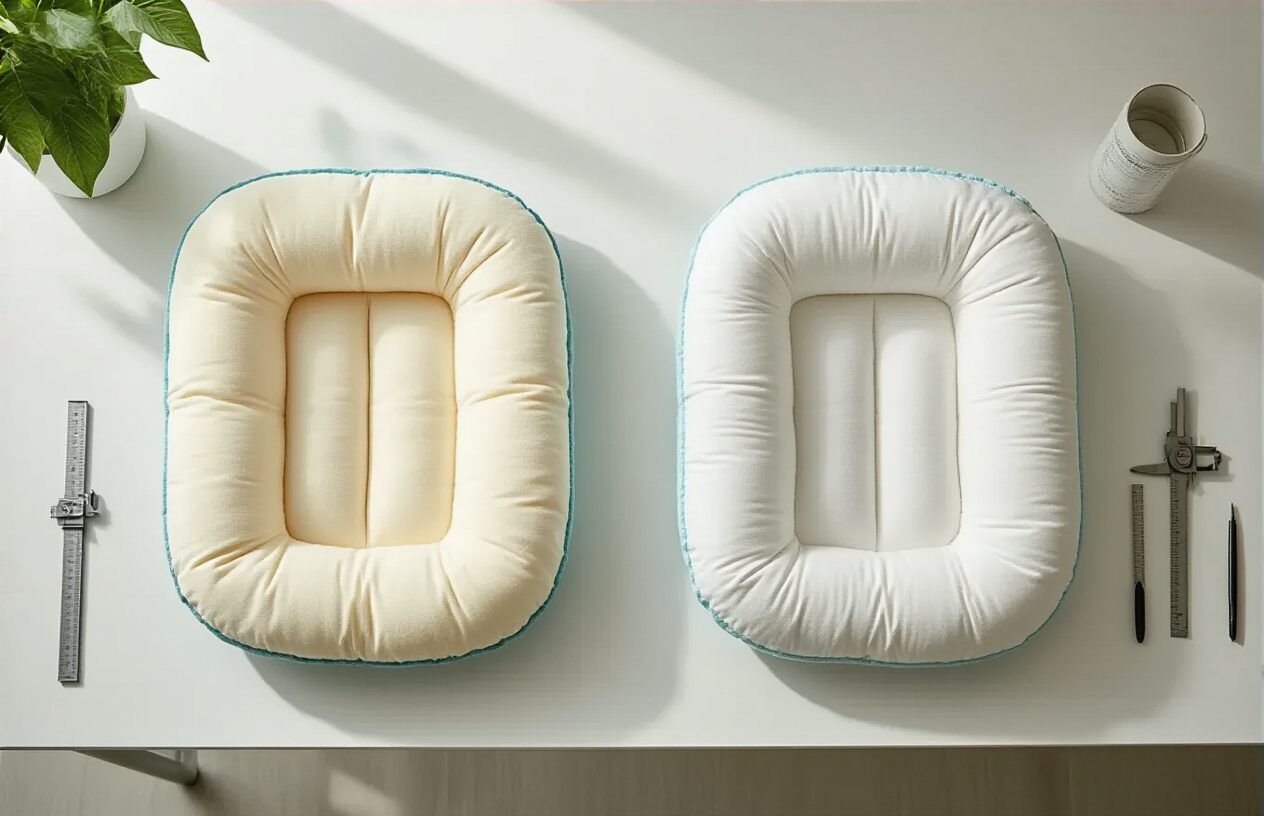
Breathability benefits of thinner materials
When manufacturers design a baby lounger pillow with minimal padding, they create natural pathways for air circulation that thick cushioning simply can’t provide. Thinner materials allow oxygen to flow freely around your baby’s sleeping area, reducing the risk of carbon dioxide buildup that can occur with heavily padded surfaces.
The fabric density in minimally padded loungers typically ranges between 200-400 GSM (grams per square meter), compared to 600-800 GSM in heavily cushioned alternatives. This difference creates microscopic air pockets that work like tiny ventilation systems, ensuring fresh air reaches your baby consistently throughout sleep periods.
Mesh panels and breathable cotton blends commonly used in these designs actively wick moisture away from your baby’s skin while maintaining airflow. This combination prevents the stuffy, enclosed feeling that can develop with thicker padding materials.
Temperature regulation for infant comfort
Babies have immature thermoregulatory systems that make them particularly sensitive to temperature fluctuations. Minimal padding designs help maintain optimal sleeping temperatures by preventing heat retention that occurs with excessive cushioning materials.
Dense foam padding acts like insulation, trapping your baby’s body heat and potentially causing overheating – a significant risk factor for sleep-related incidents. Thinner surfaces dissipate heat more effectively, allowing your baby’s natural cooling mechanisms to function properly.
The thermal conductivity of minimal padding materials typically measures 0.05-0.08 W/m·K, compared to 0.02-0.04 W/m·K in heavily padded alternatives. This higher conductivity means heat transfers away from your baby’s body more efficiently, maintaining comfortable temperatures between 68-70°F in the immediate sleeping environment.
Firm surface support for proper development
Medical experts consistently recommend firm sleeping surfaces for infants because they support healthy spinal alignment and proper muscle development. Minimal padding in baby lounger pillows provides the resistance newborns need for developing core strength and motor skills.
Soft, heavily padded surfaces can create pressure points that restrict blood circulation and impede natural movement patterns. The slight give in minimally padded designs – typically 2-4mm compression under infant weight – offers comfort without compromising the structural support babies require.
This firmness also prevents the formation of indentations or “wells” that can develop in softer materials, ensuring your baby maintains proper positioning throughout sleep cycles.
How Excessive Padding Creates Safety Hazards
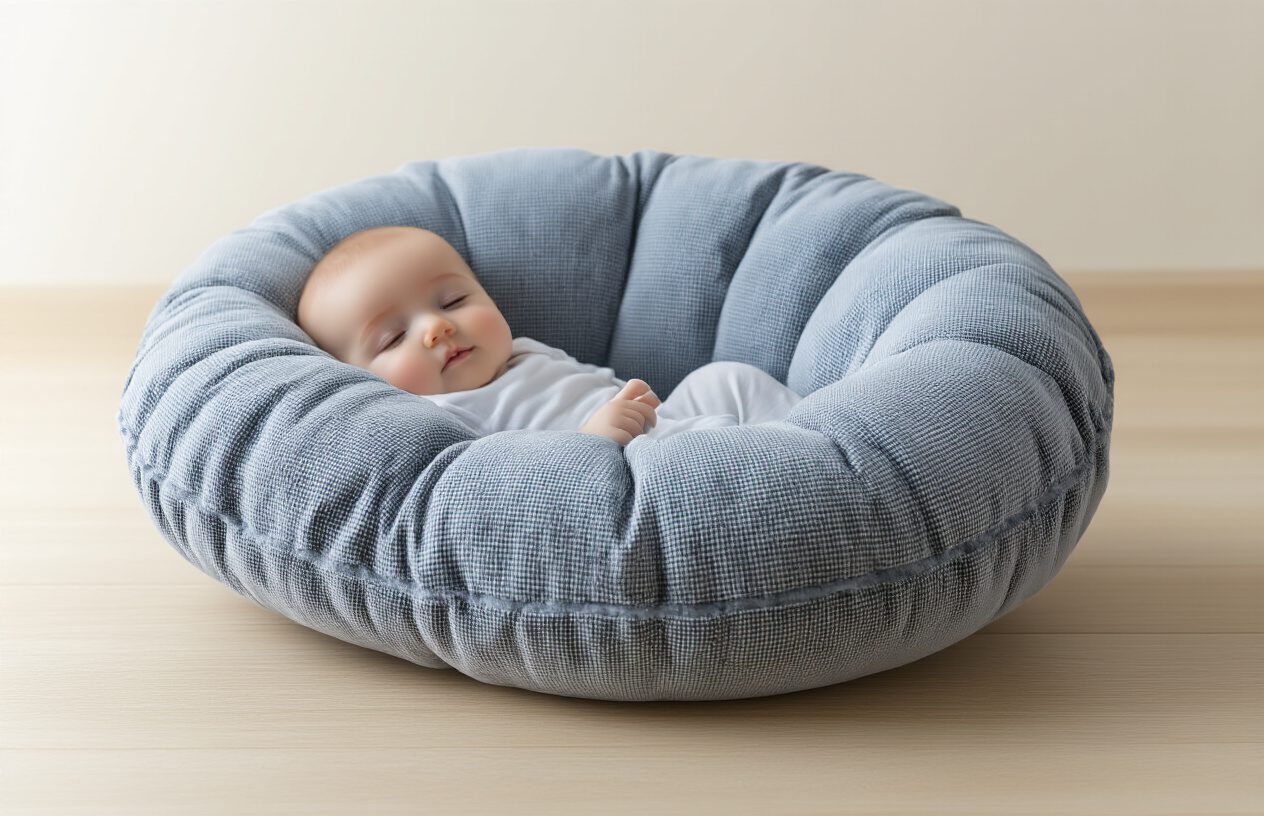
Increased Risk of Positional Asphyxia
Thick, plush padding in a Baby Lounger Pillow creates dangerous contours that can trap your baby’s head and neck in compromising positions. When babies sink into overly soft surfaces, their airways can become restricted without you even realizing it. Newborns lack the neck strength to reposition themselves if their breathing becomes obstructed, making them particularly vulnerable to positional asphyxia.
The American Academy of Pediatrics specifically warns against products with excessive cushioning because they can cause a baby’s chin to press against their chest, blocking the airway. This silent danger often goes undetected since babies may not show obvious signs of distress while their oxygen intake gradually decreases.
Creation of Dangerous Sleep Environments
Heavily padded loungers create what experts call “unsafe sleep surfaces” that mirror many of the risk factors associated with SIDS (Sudden Infant Death Syndrome). The soft, uneven surfaces formed by excessive padding can create pockets where carbon dioxide accumulates around your baby’s face.
These cushioned environments also encourage side-sleeping positions, which pediatric safety organizations strongly advise against. When babies roll or shift in heavily padded loungers, they may find themselves face-down against soft material with no way to turn themselves over.
Impaired Air Circulation Around Baby’s Face
Dense padding acts like a barrier, preventing fresh air from circulating freely around your sleeping baby. Unlike firm surfaces that allow air to flow naturally, thick cushioning creates stagnant air pockets that can trap exhaled carbon dioxide near your baby’s mouth and nose.
This restricted airflow becomes especially problematic when babies naturally turn their heads during sleep. Instead of finding fresh air, they may encounter the same pocket of depleted oxygen they just exhaled into the surrounding padding.
Higher Likelihood of Overheating
Excessive padding works like insulation, trapping body heat and preventing natural temperature regulation. Babies already have difficulty regulating their body temperature, and thick cushioning compounds this challenge by creating a warm microenvironment around their bodies.
Overheating has been identified as a significant risk factor in infant sleep safety. When babies become too warm, their natural arousal responses may become dulled, making it harder for them to wake up if they encounter breathing difficulties.
Difficulty Monitoring Baby’s Breathing
Thick padding makes it nearly impossible to observe your baby’s chest movements and breathing patterns clearly. When babies sink into soft surfaces, their torso becomes partially obscured, making visual monitoring challenging even when you’re nearby.
Parents rely heavily on being able to see the gentle rise and fall of their baby’s chest as a reassurance that all is well. Excessive padding removes this important visual cue and can delay recognition of breathing irregularities or distress.
Benefits of Less Padded Baby Loungers
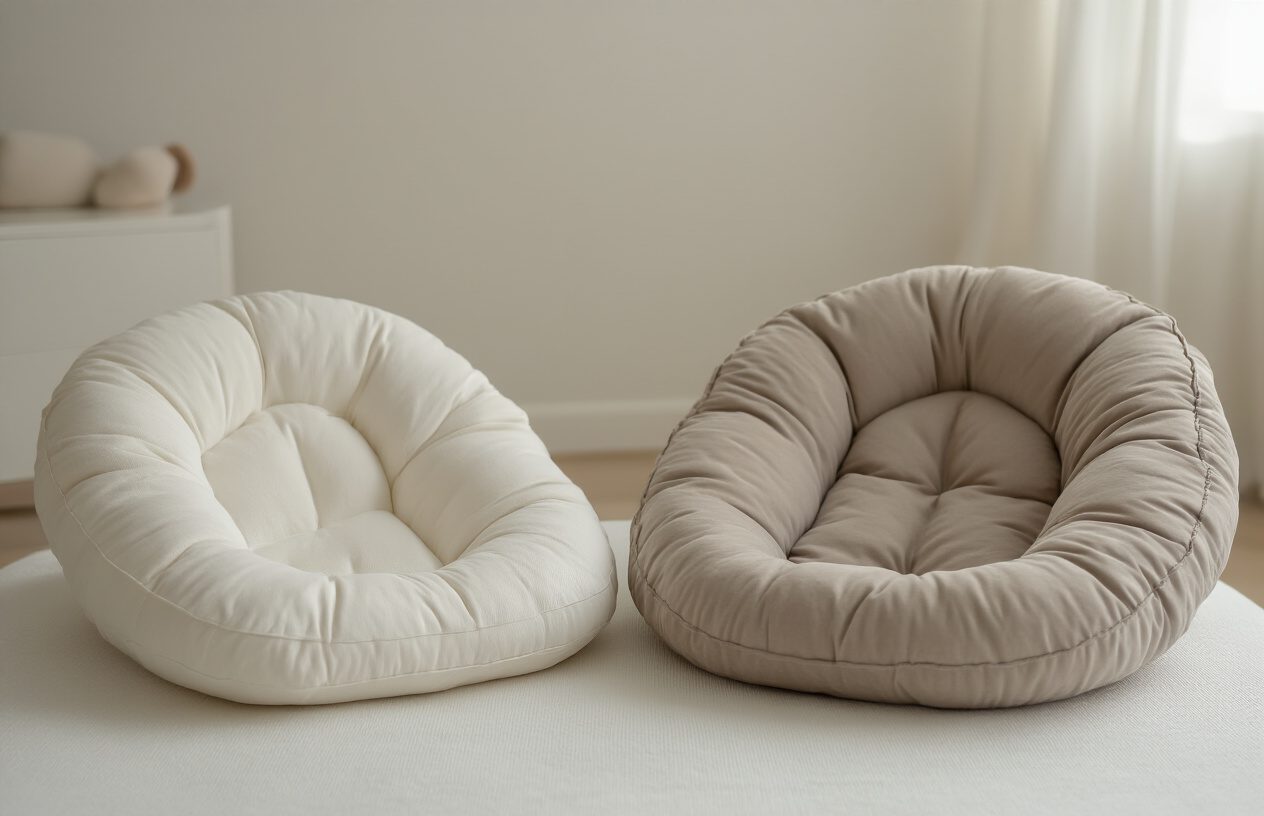
Enhanced Airflow and Ventilation
Baby lounger pillows with minimal padding create better air circulation around your little one. The reduced thickness allows fresh air to move freely through the fabric, preventing carbon dioxide buildup that can occur with heavily padded alternatives. This improved airflow becomes especially important during sleep when babies naturally breathe more slowly and deeply.
Thinner materials also prevent the creation of air pockets that trap stale air. When babies shift positions, the less padded surface doesn’t conform as tightly to their body, maintaining crucial space for proper ventilation. This design principle directly supports safe breathing patterns and reduces the risk of rebreathing exhaled air.
Reduced Overheating Risks
Excessive padding acts like insulation, trapping body heat and creating dangerous temperature increases. Minimally padded baby loungers allow heat to dissipate naturally, keeping your baby’s core temperature within safe ranges. Overheating has been linked to increased SIDS risk, making this benefit particularly significant.
The breathable nature of less padded designs means babies can self-regulate their temperature more effectively. Their natural cooling mechanisms work better when not fighting against thick layers of padding that block heat release. This temperature control becomes even more critical during warmer months or in heated indoor environments.
Easier Cleaning and Maintenance
Less padding translates to faster drying times and more thorough cleaning. Thin materials allow cleaning solutions to penetrate completely and rinse out easily, eliminating trapped bacteria and allergens that can accumulate in thick padding layers.
Many minimally padded baby loungers feature removable covers that wash and dry quickly. This convenience encourages more frequent cleaning, which directly impacts your baby’s health and hygiene. Parents can maintain multiple clean covers in rotation, ensuring the lounger stays fresh and sanitary.
The simplified construction also means fewer seams and crevices where dirt and moisture can hide, making spot cleaning more effective.
Better Compliance with Safety Guidelines
Current pediatric safety recommendations strongly favor firm sleeping surfaces with minimal soft bedding. Less padded baby loungers align with these evidence-based guidelines from organizations like the American Academy of Pediatrics.
These products typically undergo more rigorous safety testing because they meet stricter standards for firmness and breathability. Manufacturers of minimally padded loungers often provide detailed safety certifications and testing results, giving parents greater confidence in their choice.
The simpler design also reduces variables that could create safety concerns, making it easier for regulatory bodies to evaluate and approve these products for infant use.
What to Look for When Choosing a Safe Baby Lounger
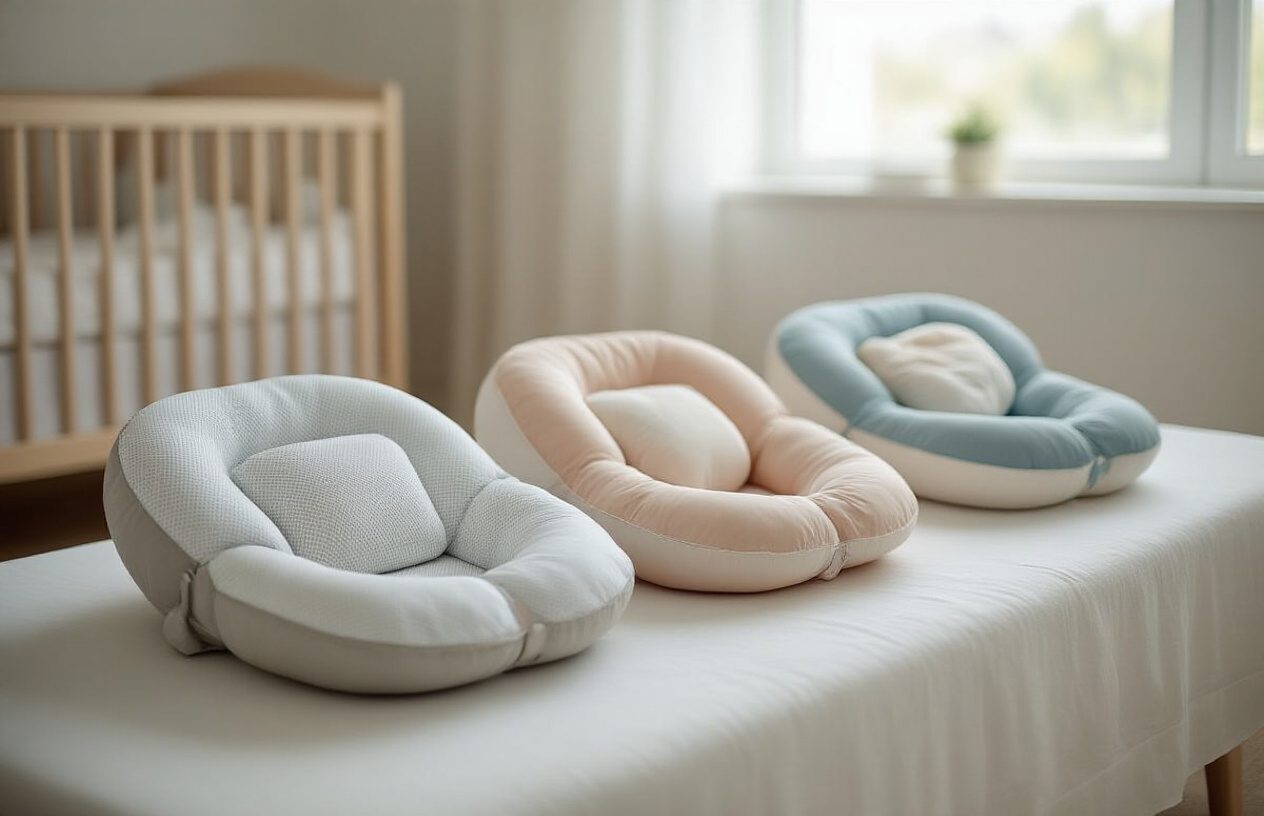
Appropriate Padding Thickness Specifications
When shopping for a safe Baby Lounger Pillow, padding thickness makes all the difference. Look for loungers with firm, minimal padding that measures no more than 1-2 inches thick. The surface should feel supportive rather than plush or squishy when you press down on it. Avoid any lounger where your hand sinks deeply into the padding or where the material creates significant indentations.
The ideal padding should provide just enough cushioning to keep your baby comfortable while maintaining a firm sleep surface. Memory foam or thick polyester fill are red flags – these materials can conform too closely to your baby’s face and potentially restrict airflow. Instead, choose loungers with thin, breathable padding that springs back quickly when compressed.
Breathable Fabric Materials and Construction
Fabric choice plays a crucial role in your baby’s safety and comfort. Natural, breathable materials like organic cotton, bamboo, or moisture-wicking blends allow proper air circulation around your baby’s body. These fabrics help prevent overheating and reduce the risk of suffocation by allowing air to flow freely through the material.
Pay attention to the construction details too. Look for loungers with mesh panels or perforated sections that enhance breathability. Avoid vinyl, synthetic leather, or tightly woven fabrics that can trap heat and moisture. The fabric should feel lightweight and allow air to pass through easily when you hold it up to your mouth and breathe through it.
Safety Certifications and Testing Standards
Reputable Baby Lounger Pillow manufacturers submit their products for independent safety testing. Look for certifications from recognized organizations like the Consumer Product Safety Commission (CPSC), ASTM International, or equivalent international standards bodies. These certifications mean the product has undergone rigorous testing for safety hazards.
Check the product packaging or website for specific test results related to suffocation risks, structural integrity, and chemical safety. Products that meet or exceed safety standards will proudly display their certifications. Be wary of loungers that lack any safety documentation or certification information.
Age-Appropriate Design Features
Different design elements serve specific age groups safely. For newborns, look for loungers with minimal raised edges that don’t create enclosed spaces around the baby’s head. The design should be open and flat rather than nest-like or cocoon-shaped.
As your baby grows, adjustable features become important. Some safe loungers offer removable components that adapt to your child’s developmental stages. The key is ensuring that at every stage, the sleeping surface remains firm and the design doesn’t create potential entrapment or suffocation hazards around your baby’s head and neck area.
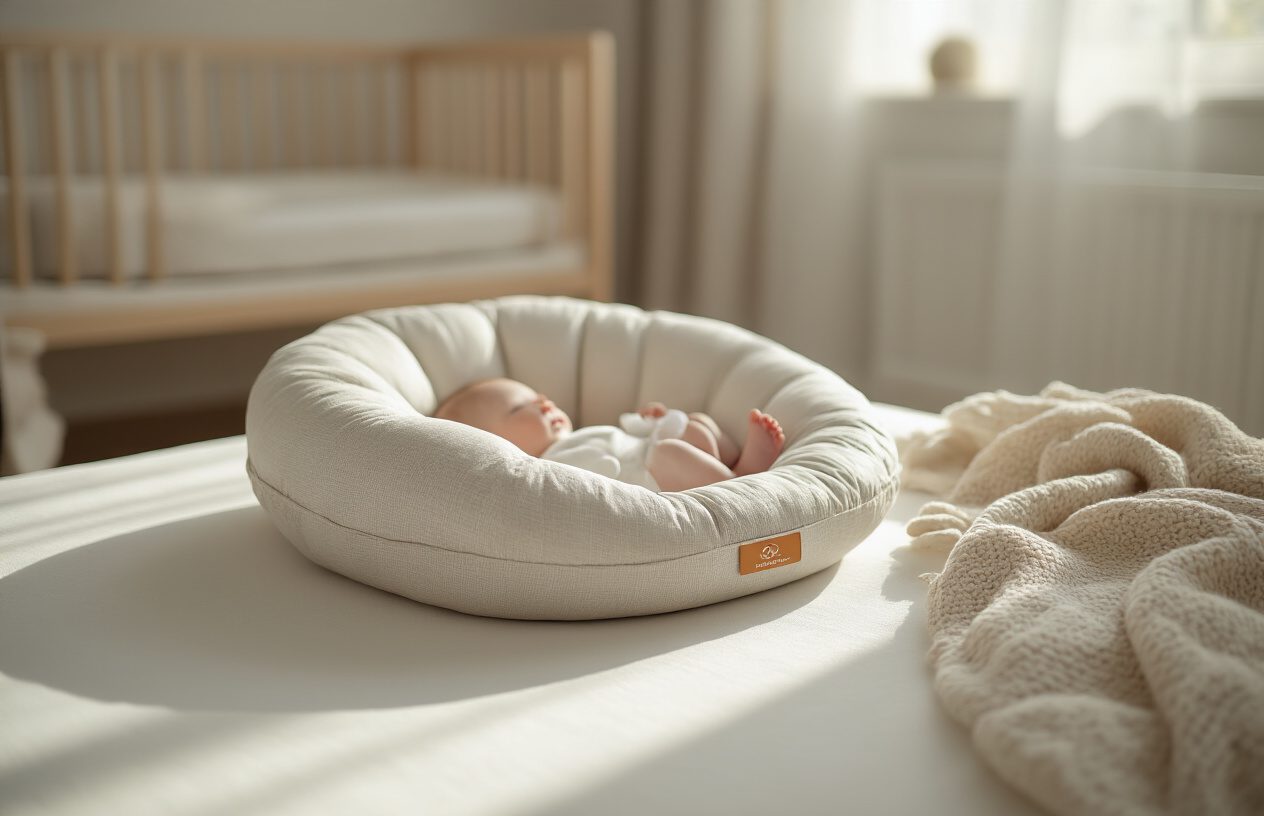
When it comes to baby loungers, the counterintuitive truth is that less really is more. The research shows us that minimal padding isn’t just a design choice – it’s a safety feature that helps prevent suffocation risks and overheating while keeping your little one in the safest position possible. Those plush, heavily cushioned loungers might look cozy, but they can actually create dangerous situations that no parent wants to face.
As you shop for a baby lounger, remember that safety standards exist for good reasons. Look for products with firm, breathable surfaces and minimal padding that still provide comfort without compromising your baby’s wellbeing. Your baby’s safety is worth more than any aesthetic appeal, and choosing a responsibly designed lounger gives you the peace of mind every parent deserves.





